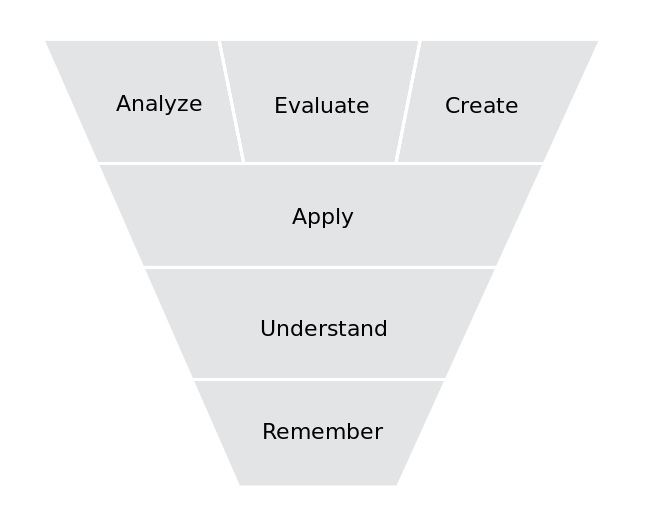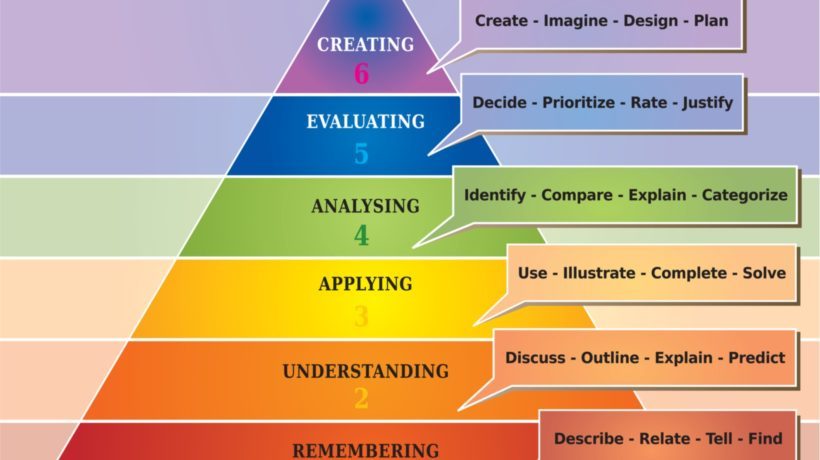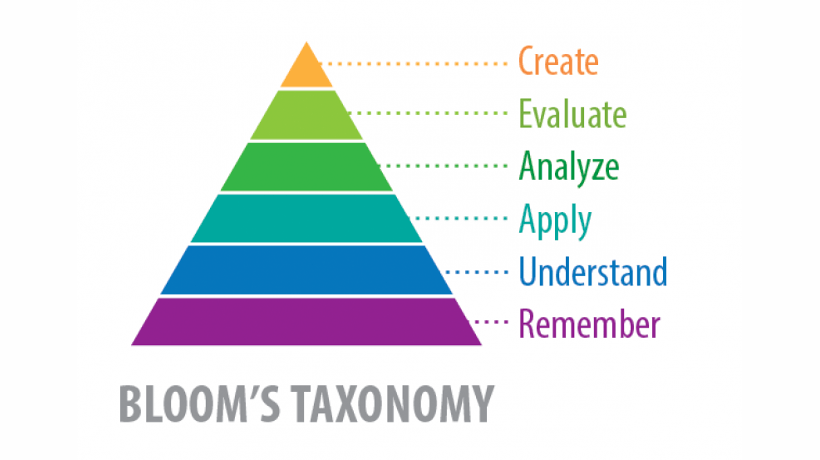The definitions of e-learning are numerous and varied but one excepted definition is "learning facilitated and supported through the use of information and communications technology", (JISC, 2003).
In their report (2004) Mayes and de Freitas go on to surmise that in this framework (ie e-learning) there are no models for e-learning per se, only e-enhancements of models of learning in general.
Mayes and de Freitas (2004) suggest the use of taxonomy and e-learning design should uncover the key role of technology in the learning ...going on to state "in order to set our analysis of e-learning... it is necessary to consider the nature of the learning outcomes sought mainly through technology including e-learning methods.” (Mayes & de Freitas, 2004)
Is Blooms Taxonomy Relevant to e-Learning?
Blooms Taxonomy (1956) was developed to classify the complexity of questions asked in assessments, ultimately becoming a system for classifying learning outcomes.
Mayes and de Freitas report of 2004 in a critical framework seems to skim over Blooms Taxonomy only giving a terse reference, by stating that “practitioners are often encouraged to use verbs from Bloom’s Taxonomy to define desired outcomes” this “often carried out as a post-hoc justification for teaching already taken” ...concluding that this being “quiet inadequate” for fundamental pedagogic issues. (Mayes & de Freitas, 2004).
This view is supported in (Sugrue, 2002) “Problems with Bloom’s Taxonomy” in which she states “the categories or levels of Blooms Taxonomy are not supported by any research”. (Sugrue, 2002) goes on to state Blooms Taxonomy’s “invalidity” in that it being 50 years old, there is also an “unreliability” in a consistency of use and an “impracticality” suggesting every outcome above knowledge becomes a higher order, thus making Bloom Taxonomy two tiered. The article continues by offering alternatives more focused on performance.
Despite the critique outlined in Surgues report, Bloom’s Taxonomy is still often the basis for the design of learning outcomes “and despite its age is still one of the best aids to writing good learning outcomes” . (Birmingham, 2002)
On a personal level the author of this report as tried to transfer Blooms Taxonomy into an e-learning context by linking Blooms Taxonomy to a virtual learning environment (VLE) in the guise of Moodle. This was based on the use of (Church, 2010) “Blooms Revised Taxonomy Digital Approach” in which Church transfers Bloom’s traditional verbs by inserting digital alternatives, so for example “creating” a written piece of work becomes “blogging”. By linking these digital terms to “activities” within Moodle the author was able to demonstrate “activities” that could cover Blooms Taxonomy domains and verbs. This was to act as a guide in the design of e-learning course using Moodle. (Rollins, 2010).
With e-learning being seen as the future of education does Bloom's Taxonomy still have a role to play?
References
- Birmingham, U., 2002. UCE Birmingham Guide to Learning Outcomes. Available at: http://www.ssdd.bcu.ac.uk/outcomes/ Accessed Monday October 2012.
- Church, A., 2010. Educational Origami. Available at: http://edorigami.wikispaces.com/Bloom%27s+Digital+Taxonomy Accessed Monday October 2012.
- JISC, 2003. e-Learning Pedagogy programme. Available at: http://www.jisc.ac.uk/elearning_pedagogy.html# Accessed Monday October 2012.
- Mayes, T. & de Freitas, S., 2004. Stage 2: Review of e-learning theories, framework and models. Available at: Stage 2: Review of e-learning theories, framework and models. Accessed Monday October 2012.
- Rollins, M., 2010. Moodle and Blooms's Taxonomy, Manchester: Lulu Enterprise.
- Sugrue, B., 2002. Problem with Bloom's Taxonomy. Available at: http://eppicinc.files.wordpress.com/2011/08/sugrue_bloom_critique_perfxprs.pdf Accessed Monday October 2012.








